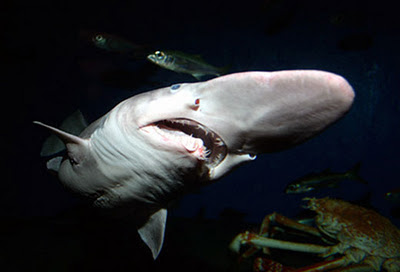This is definitely one fish that I would not want to catch with my fishing rod and you will see why in a few seconds.
The weird and wonderful hagfish has managed to capture the interest of scientists since the 1700s but we still know very little about this animal. The hagfish was scientifically described in 1753 by one of the disciples of Carl von Linné, a Swede named Per Kalm. In 1747, Per Kalm left the Swedish town of Uppsala. His ultimate destination was North America, but boat repairs forced him to stay a while in Grimstad, Norway where he found hagfish. Thinking it was a blind lamprey, Kalm wrote down his observations and later shared them with Linné. The description can be found in his “En resa till Norra America” (A Journey to Northern America) from 1753. Linné discussed the strange “lamprey” with Norwegian Bishop and naturalist Johan Ernst Gunnerus and they both classified it as a worm. In 1763, Gunnerus wrote about the creature and he then referred to it as a Sleep-Marken. During last decade of the 18th century the animal got its own scientific name – Myxine glutinosa – and was placed in the roundmouth family. Today we know that Myxine glutinosa, commonly known as the Atlantic Hagfish,is only one of many species in the large hagfish family Myxinidae. There are currently 67 described species of hagfish and the number might very well increase as the bottoms of our oceans become more thoroughly explored.
The hagfish can turn 20 Litres (5 Gallons) of water into slime in a matter of minutes.
The weird and wonderful hagfish has managed to capture the interest of scientists since the 1700s but we still know very little about this animal. The hagfish was scientifically described in 1753 by one of the disciples of Carl von Linné, a Swede named Per Kalm. In 1747, Per Kalm left the Swedish town of Uppsala. His ultimate destination was North America, but boat repairs forced him to stay a while in Grimstad, Norway where he found hagfish. Thinking it was a blind lamprey, Kalm wrote down his observations and later shared them with Linné. The description can be found in his “En resa till Norra America” (A Journey to Northern America) from 1753. Linné discussed the strange “lamprey” with Norwegian Bishop and naturalist Johan Ernst Gunnerus and they both classified it as a worm. In 1763, Gunnerus wrote about the creature and he then referred to it as a Sleep-Marken. During last decade of the 18th century the animal got its own scientific name – Myxine glutinosa – and was placed in the roundmouth family. Today we know that Myxine glutinosa, commonly known as the Atlantic Hagfish,is only one of many species in the large hagfish family Myxinidae. There are currently 67 described species of hagfish and the number might very well increase as the bottoms of our oceans become more thoroughly explored.
The hagfish can turn 20 Litres (5 Gallons) of water into slime in a matter of minutes.
Ugly Animals - Hagfish



















































